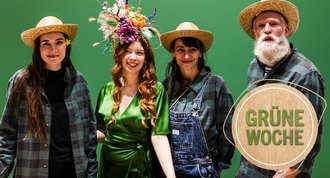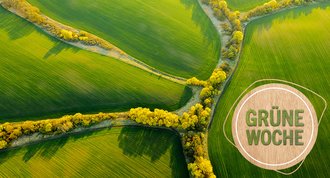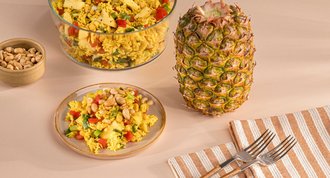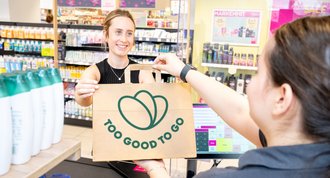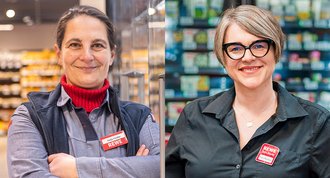
The season for organic tomatoes, cucumbers and peppers from Austria is being extended. This is made possible by a new greenhouse that uses geothermal energy for CO2-neutral heating.
Until now, "Ja! Natürlich" has avoided organic vegetables from a greenhouse altogether due to the high energy requirements for heating and lighting and has opted for imports from neighbouring countries as a more climate-friendly option due to the lower carbon footprint. A solution has now been found to fulfil consumers' strong desire for organic vegetables from Austria, even in the colder months. The new greenhouse in Geinberg, Upper Austria, utilises the geothermal energy already available in the area for CO2-neutral heating. This makes it possible to harvest tomatoes, cucumbers and pointed peppers from "Ja! Natürlich" regionally even during the colder months from the beginning of March to the beginning of November - without any additional impact on the climate. And the highest "Ja! Natürlich" standards, such as soil health through crop rotation and plant composting, are also guaranteed throughout the greenhouse.
CO2-neutral heating
"Until now, Austrian organic vegetables from "Ja! Natürlich" were only available during the summer months, as the high energy requirements were not compatible with the sustainability standards of "Ja! Natürlich". But this greenhouse cannot be compared with conventional glasshouses. Firstly, because the heat for heating can be obtained from the earth in a CO2-neutral way and no new borehole is required. Secondly, the plants in Geinberg are grown in the fertile soil of the region. In contrast to conventional greenhouses, in which the roots are supplied with a nutrient-rich substrate," says "Ja! Natürlich" managing director and agricultural expert Andreas Steidl, explaining the changeover. No harvest is possible in the darkest months of the year, December and January, as "Ja! Natürlich" deliberately avoids energy-intensive artificial lighting. "Ja! Natürlich" tomatoes, cucumbers and sweet peppers from the organic farm in Upper Austria can now be found on the shelves of Billa, Billa Plus and Adeg from spring to autumn, without having to compromise on the high standards. For example, pest control in the real soil is also carried out by beneficial insects - parasitic wasps, predatory mites, ladybirds and lacewings are among the most important helpers in the new greenhouse. Pollination of the tomato flowers in Geinberg is carried out by bumblebees," says "Ja! Natürlich" Managing Director Klaudia Atzmüller.

Healthy soil even in the greenhouse
"We attach particular importance to excellent soil quality and ensure this through a variety of natural measures, for example earthworms ensure healthy soil life right from the start. We also set high standards for the quality of our organic fertiliser: We only use organic fertiliser whose source materials come from organic farms, such as sheep's wool pellets from organic sheep, because not all organic fertilisers are the same. Plant waste is also composted at the end of each cultivation period. They then serve as valuable compost in the new crop. Another special feature is the crop rotation that Ja! Natürlich also relies on in the greenhouse: The same crop varieties are only grown on the land every three years to keep it healthy and fertile. This is the only way to ensure sustainable and long-term cultivation in line with the natural cycle," explains Andreas Steidl.
Climate-friendly thanks to a holistic energy and irrigation concept
The new greenhouse not only has sustainable heating from the existing geothermal system, but also a photovoltaic system on the roof. Rainwater is collected in large basins for watering the plants, thus ensuring self-sufficient irrigation of the new location. Optimum heating also prevents humid air, which prevents fungal diseases in the plants. The glass ceiling provides perfect lighting conditions, making all artificial light sources obsolete. Together, the two experienced fruit and vegetable producers, the Steiner and Perlinger families, have built one of the most modern and environmentally friendly greenhouses in Europe at the existing geothermal source in the Innviertel region.

